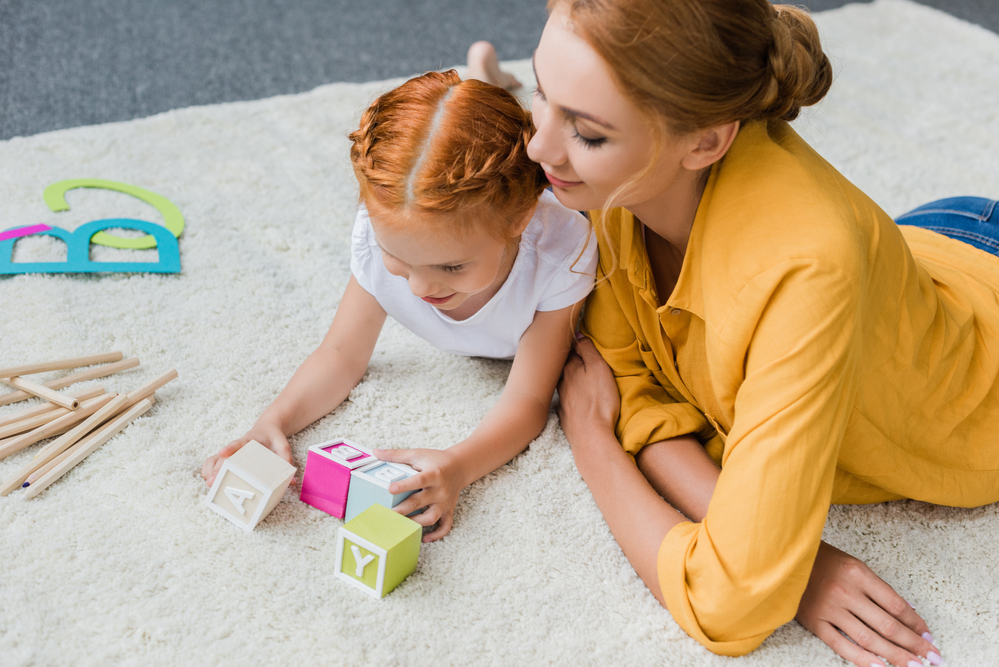Phonograms are the foundation of your child’s reading and spelling success. But what resources do you need to teach them to your child?
While phonograms sound like an intimidating literary concept, they are actually relatively easy to teach and for kids to understand. All you need is a clear plan to get started, and that’s what we’ll help you with in this article.
However, before sharing our effective learning tips with you, let’s start by evaluating what a phonogram is.
What Are Phonograms?

Phonograms are the letters or combinations of letters that represent a sound. Think of letter combinations such as oy, ck, th, and ch. These are common phonograms that you’ll often come across in the English language.
When a child doesn’t know these letter combinations and the sounds they make, it becomes challenging to write or spell correctly. But when they understand them, they know that “oy” makes an /oi/ sound (e.g., boy), “ck” makes a /k/ sound (e.g., pack), and so forth.
There are also letters that give different sounds depending on the word. For instance, “s” is a phonogram with an /s/ sound in some words (e.g., sing) and a /z/ sound in other words (e.g., has).
The Importance Of Learning Phonograms
Phonograms are an important pre-literacy skill. They are the building blocks of words because they help make reading and spelling much easier.
Let’s take the word cat as an example. For a child learning to spell, they will usually pronounce the individual sounds (i.e., phonemes) of the word: /c/-/a/-/t/.
This is fairly easy. So, let’s take things up a notch with the word talk. A child who understands phonograms doesn’t need to separate each letter of the word. Instead, they will pick up on the /alk/ sound and then be able to spell the word correctly: /t/-/alk/.
This is an essential skill because many words, especially longer ones, can be formed more quickly by remembering that certain letter combinations make certain sounds.
For example, we don’t pronounce the word holiday by going /h/-/o/-/l/-/i/-/d/-/a/-/y/. Sure, you can, but there are 26 letters in the English language. Imagine how much time you’d spend sounding out each letter of every word you want to spell.
A much better strategy is to focus on segmenting the word by phonograms: /h/-/o/-/li/-/day/. Understanding phonograms makes spelling and reading fluently much easier and more efficient.
And a child who understands phonograms may have a better chance of correctly spelling words they are unfamiliar with. For example, when a child can spell winter, they have a better chance of spelling sister, mister, enter, after, etc.
Phonogram Vs. Phoneme

When many people think of phonograms, they often mistake them for phonemes. They both involve the individual sounds that make up a word, so they must be pretty much the same, right?
While their concepts may be closely related, there are fundamental differences between the two. Let’s take a look.
What Is A Phoneme?
A phoneme is the smallest unit of sound in our spoken language. We have 44 phonemes in the English language, and we combine these individual units of sound to make words.
For example, from the five-letter word light, we only hear or pronounce three individual sounds: /l/-/i/-/t/.
How’s This Different From A Phonogram?
A phonogram, on the other hand, is a visual symbol that represents a speech sound. So, from the above example, the /igh/ part of the word has the /i/ phonogram.
In total, there are 75 basic phonograms in the English language. We commonly use around 49 of them, some of which include /igh/, /dge/, /oo/, /dger/, /th/, /sh/, /ch/, and /ph/.
As highlighted above, these are the building blocks of reading and spelling, so the more familiar children are with these sounds and letter combinations, the more comfortable they will be when reading and spelling.
Here are a few tips to help your young learner grasp these concepts at home.
Tips For Teaching Phonograms At Home
1) Start Simple

There is no perfect pace for teaching phonograms. Some children may master the concepts and skills very quickly, while others may need a little more time.
No matter where your child is on their learning journey, the best approach is to start with a few and build from there.
For example, introducing three to five phonograms at a time could be a great starting point. Once your child gets comfortable with those, you can then move on to the next three to five, and so forth.
Since there are so many, it’s OK to set the goal of introducing a certain amount each week. However, if your young learner hasn’t mastered the ones you taught them last week, give them as many days as they need before progressing to new phonograms.
This will keep them excited about learning and prevent them from becoming overwhelmed. Don’t worry about a specific timeline; they will eventually get the hang of it!
2) Read Together Regularly
Here at HOMER, we’re huge fans of early childhood reading. Not only do books expose children to incredible worlds and help with cognitive and language development (and so much more!), but reading also plays an essential role in helping children get more familiar with phonograms.
Whenever your child is reading and comes across a word they’re unfamiliar with, remember to pause and go back to the basics of phonemes and phonograms. Help them sound out the letters and letter combinations.
You can also reinforce a phonogram by highlighting other similar words your child might know. For example, if they’re learning the /ch/ sound, remind them of words they may know, such as chair, chips, chat, child, etc.
With the above tips in mind, here are a couple of activities to make learning phonograms at home fun.
Phonogram Activities
1) Phonogram Simon Says

What You’ll Need:
- 8 Index cards
- Marker
- 8 single-letter phonograms
- Crayons
What To Do:
Start by writing down eight phonograms (one on each card) with your child. As you’re writing, say the sound the letter or letter group makes. Then, have your child decorate each card in fun ways.
Once you’re done making your cards, stand on one side of the room and have your child stand on the other side. Then, hold up a card and say, “Simon says make the sound!”
If your child pronounces the phonogram correctly, they take a jump toward you. If they don’t, they have to jump backward. (Note: If there’s no room for them to go backward, they can stay put.)
The goal is for your child to reach you before the deck is done!
Tip: If your child is still mastering individual letter sounds, you can play this game with single-letter phonograms instead of letter groups.
2) 52 PickUp, With A Twist
What You’ll Need:
- The same index cards from Sound-Letter Simon Says (and more if your child is ready).
What To Do:
To start playing, toss the cards in the air. Then, have your child go around the room and say the sound for every letter or phonogram that is facing up.
If they can make the sound correctly, they get to keep that card. Any cards they cannot pronounce go back to the deck. Then, it’s your turn (feel free to fake it a bit here).
Take turns going back and forth until all the cards are picked up. The person with the most cards wins!
3) Feel The Letter
What You’ll Need:
- Magnetic or foam letters
What To Do:
Start by asking your child to put their hands behind their back. Then, place a magnetic or foam letter in one of their hands and have them feel its shape.
To get a point, your child needs to tell you the letter. And to get a bonus point, they need to tell you the sound that letter makes. You and your child can take turns guessing to make it a fun competition!
Remember to keep things fun. For example, if your young learner gets a phonogram wrong, simply correct them and move on without stressing too much. The point of this game is to practice, and repetition is a great way to solidify phonogram knowledge.
One Phonogram At A Time

Working with your child to master phonograms can be a fun journey!
When practicing, remember to start simple by introducing just a few phonograms at a time before moving on to more. In addition, reading regularly together will also help reinforce all the language rules your child is learning.
While there are many phonograms to master, try not to focus on how quickly your child is grasping them. Instead, build their confidence around each set you introduce, and they will make a little progress each day.
Armed with all these skills, they’ll soon be able to spell accurately (most of the time) and read fluently. Just wait and see!
For more on helping develop your child’s reading and spelling skills, check out our Learn & Grow app.
,


